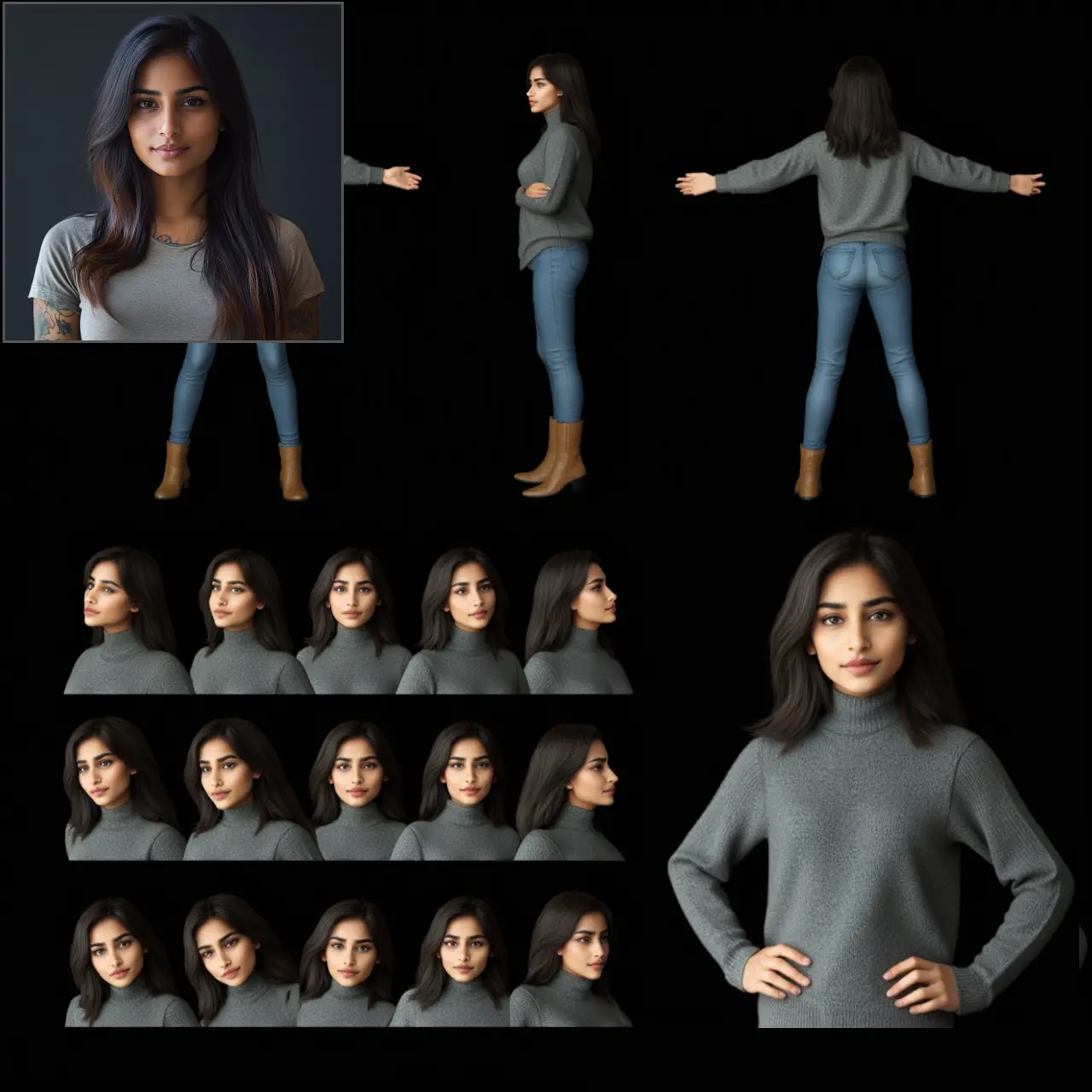ComfyUI Node: Blend Latents (PPF Noise)
Blend Latents (PPF Noise)
Categorylatent
WASasquatch (Account age: 4910days) Extension
PPF_Noise_ComfyUI Latest Updated
2024-06-14 Github Stars
0.02K
How to Install PPF_Noise_ComfyUI
Install this extension via the ComfyUI Manager by searching for PPF_Noise_ComfyUI- 1. Click the Manager button in the main menu
- 2. Select Custom Nodes Manager button
- 3. Enter PPF_Noise_ComfyUI in the search bar
Visit ComfyUI Online for ready-to-use ComfyUI environment
- Free trial available
- 16GB VRAM to 80GB VRAM GPU machines
- 400+ preloaded models/nodes
- Freedom to upload custom models/nodes
- 200+ ready-to-run workflows
- 100% private workspace with up to 200GB storage
- Dedicated Support
Blend Latents (PPF Noise) Description
Seamlessly blend latent representations for creative visual outputs with control over blending modes, ratios, and masks.
Blend Latents (PPF Noise):
The Blend Latents (PPF Noise) node is designed to seamlessly combine two latent representations, offering a powerful tool for AI artists to create unique and complex visual outputs. This node allows you to blend two sets of latent data, which are essentially encoded versions of images, using various blending modes and parameters. By adjusting the blend ratio and strength, you can control the influence each latent has on the final output, enabling a wide range of creative possibilities. The node also supports the use of masks to selectively blend specific areas, providing even more precision and control over the blending process. This functionality is particularly useful for generating novel image compositions or enhancing existing ones by leveraging the latent space's rich and abstract features.
Blend Latents (PPF Noise) Input Parameters:
latent1
This parameter represents the first latent input, which is a tensor containing encoded image data. It serves as one of the two primary sources for the blending operation. The shape of this tensor must match that of latent2 to ensure a successful blend.
latent2
Similar to latent1, this parameter is the second latent input. It provides the other half of the data to be blended. Ensuring that latent2 has the same shape as latent1 is crucial for the blending process to work correctly.
mode
The blending mode determines how the two latents are combined. Options include various mathematical operations like addition or subtraction. The choice of mode can significantly affect the visual characteristics of the blended output.
blend_percentage
This parameter controls the proportion of each latent in the final blend. A value of 0.5 means both latents contribute equally, while values closer to 0 or 1 will favor one latent over the other. The range is typically from 0.0 to 1.0.
blend_strength
Blend strength adjusts the intensity of the blending effect. A higher strength results in a more pronounced blend, while a lower strength yields a subtler effect. This parameter allows for fine-tuning the visual impact of the blend.
mask
An optional parameter, the mask allows for selective blending of specific areas within the latents. By applying a mask, you can control which parts of the latents are blended, providing greater creative control.
clamp_min
This parameter sets the minimum value for clamping the blended output, ensuring that the resulting values do not fall below a certain threshold. It helps maintain the integrity of the output by preventing extreme values.
clamp_max
Similar to clamp_min, this parameter sets the maximum value for clamping the blended output. It ensures that the resulting values do not exceed a specified limit, which is useful for maintaining consistency in the output.
Blend Latents (PPF Noise) Output Parameters:
samples
The primary output of the node, samples, is a tensor containing the blended latent data. This output can be further processed or converted back into an image, allowing you to visualize the results of the blending operation.
noise_mask
If a mask was used during blending and the set_noise_mask option is enabled, this output provides the noise mask applied to the latents. It offers insight into the areas affected by the mask, which can be useful for debugging or further processing.
Blend Latents (PPF Noise) Usage Tips:
- Experiment with different blending modes to achieve various artistic effects. Each mode can drastically change the outcome, so try multiple options to find the one that best suits your creative vision.
- Use masks to focus the blending effect on specific areas of the latents. This can help in creating more detailed and controlled compositions, especially when working with complex images.
- Adjust the blend percentage and strength to fine-tune the balance between the two latents. Small changes in these parameters can lead to significant differences in the final output.
Blend Latents (PPF Noise) Common Errors and Solutions:
Unsupported blending mode. Please choose from the supported modes: ...
- Explanation: This error occurs when an invalid blending mode is selected. The node only supports specific modes, and using an unsupported one will trigger this error.
- Solution: Check the list of available blending modes and ensure that you select one of the supported options. Double-check for any typos or incorrect mode names.
Input latents must have the same shape, but got: a ..., b ...
- Explanation: This error indicates that the two input latents have different shapes, which prevents them from being blended together.
- Solution: Ensure that both
latent1andlatent2have the same shape before attempting to blend them. You may need to resize or preprocess the latents to match their dimensions.
Blend Latents (PPF Noise) Related Nodes
RunComfy is the premier ComfyUI platform, offering ComfyUI online environment and services, along with ComfyUI workflows featuring stunning visuals. RunComfy also provides AI Playground, enabling artists to harness the latest AI tools to create incredible art.



